#thomas no shinzo
Text
Thomas no Shinzō edit.
Manga: Thomas no Shinzō by Moto Hagio ✨❤️🩹
Song: Washing Machine Heart by Mitski 🩻🎼
"Cariño, aún cuando cierro los ojos, sé bien quién pretendes que soy"
#shonen ai#year 24 group#manga#moto hagio#heart of thomas#thomas no shinzou#thomas no shinzo#thomas no shinzō edit#eric fruheling#julusmole bayhan#oscar reiser#mitski#washing machine heart#boy's love manga
12 notes
·
View notes
Text
Eric Fruheling from the manga "Thomas no Shinzou" or "The Heart of Thomas" (1974) by Moto Hagio

#moto hagio manga#hagio moto#moto hagio#year 24 group#thomas no shinzou#thomas no shinzō#thomas no shinzo#heart of thomas#the heart of thomas#il cuore di thomas#thomas werner#eric fruheling#julusmole bayhan#oscar reiser#1999 nen no natsu yasumi#summer of 1999#summer vacation 1999#live action#shounen ai#shounen ai manga#70s shounen ai#70s shounen ai manga#shōnen ai#shōnen ai manga#70s shōnen ai#70s shōnen ai manga#shonen ai#shonen ai manga#70s shonen ai#70s shonen ai manga
6 notes
·
View notes
Text

12 notes
·
View notes
Text
⭐️ Weekly Fandom Vote (Round 28) ⭐️


#fandom#fandom questions#character quiz#quizzes#rounds#films and tv shows#british films and tv shows#american films and tv shows#canadian films and tv shows#european films and tv shows#cartoons#world leaders#politicians#politics#lolitics#thomas and friends#thomas the tank engine#ttte#shinzo abe#asian politics
8 notes
·
View notes
Text
Pick a Novel: Keywords/prominent themes in your life
Pick the novel that draws your attention the most. If you can't decide between two, then look at the 2 readings. This is a general reading, so not everything will apply. Please take what resonates and leave what doesn't behind!
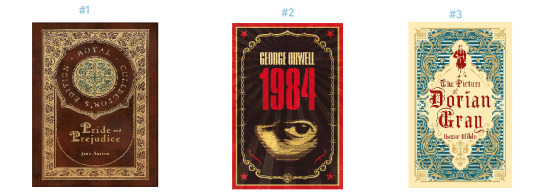
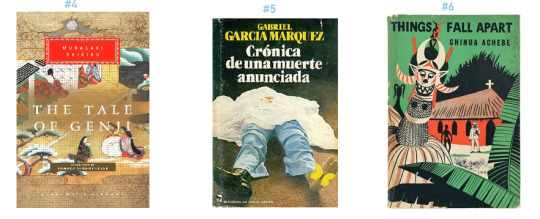
#1
Keywords: love, lust, passion, fun, temperament, cafe, sweet, bicycle, pen, books, music, loyalty, winter, sofa, furniture, thoughts, light, intuition, soulmate, art, obsidian, cake, carbonated water, skincare, socks, cooking
Celebrities/Public Figures: Audrey Hepburn, Min Yoongi, IU, Claude Monet, Angela Merkel, Andrew Carnegie, John Johnson, Mark Zuckerberg, Larry Page, Howard Schultz, Sam Walton, Amancio Ortega, Queen Elizabeth I, Jane Austen, Jennie Kim
Countries: Italy, Canada, South Africa, Thailand, Saudi Arabia, Singapore, Greece, Madagascar, Qatar, Sweden, Zambia, Taiwan, Solomon Islands
Numbers: 11, 1, 5, 9, 80, 888, 6
Brands: Hermes, Tiffany, Apple, Instagram, Taobao, Lamborghini, Deloitte, Microsoft, Chopard, Givenchy, Patek Phillipe, Chloe, Alaia, Kraft,
Kpop songs: Young Forever by BTS, Shine by PENTAGON, Me Gustas Tu by GFRIEND, Run to You by DJ DOC, Love Lee by AKMU, Deja vu by TXT, Back Down by P1Harmony, Love shot by EXO
#2
Keywords: economy, job loss, new opportunities, play, drama, anger, frustration, lost, compass, computers, battery, feet, head, brain, summer, pearl, avocado, junk food, fried chicken, challenge, frugal
Celebrities/Public Figures: Grace Kelly, Billie Eilish, Keanu Reeves, Rosé, Jung Hoseok, Salma Hayek, Pablo Picasso, Princess Diana, Thomas Edison, Sergey Brin, Mary I, William Shakespeare, Lee Nayeon
Countries: New Zealand, USA, Maldives, Indonesia, United Kingdom, Venezuela, Lithuania, Nepal, Portugal, Poland, Lebanon, Mali, Netherlands
Numbers: 4, 99, 101, 33, 13, 14, 0
Brands: Masion Margiela, Amazon, facebook, Shein, PWC, Missoni, Moschino Couture, Toyota, citi bank, Chaumet, Polene, Pizza Hut,
Kpop songs: Love Dive by IVE, Shangri-la by VIXX, Sweety by Clazziquai, I NEED U by BTS, The Chaser by Infinite, Magnetic by ILLIT, My House by 2PM, ICY by ITZY
#3
Keywords: tales, gossip, lies, funny, movies, theatre, cell phone, cool, kpop, magenta, ancient, history, claws, cats, tiger, fall, jealousy, games, aquamarine, lemons, makeup, pencil, groceries
Celebrities/Public Figures: Beyonce, Lady Gaga, Morgan Freeman, Kim Seokjin, Jang Wonyoung, Matt Damon, Napoleon Bonaparte, Shinzo Abe, Steve Jobs, Voltaire, Kim Jisoo,
Countries: Ethiopia, France, Russia, Ireland, Argentina, Afghanistan, Libya, Rwanda, Nigeria, Pakistan, Morocco, Malta, Kazakhstan, Kenya, Iraq,
Numbers: 2, 7, 69, 25, 55, 79, 1182
Brands: Saint Laurent, miumiu, Starbucks, Mercedez-Benz, Nestle, Oracle, Tod's, Bulgari, Rolex, KFC, SUBWAY, Carrefour, Kellog's
Kpop songs: Supernova by aespa, Maestro by seventeen, Not by the moon by GOT7, Alone by Sistar, Hip by MAMAMOO, Good Day by IU, Bite Me by ENHYPEN, Work by ATEEZ, The Feels by TWICE
#4
Keywords: foreign, spicy, peppery, rice, no, objection, resistance, control, storms, thunderstorms, shower, tension, crush, pop, paper, mango, legs, fragrance, emerald, clothing rack, tomatoes, defeat,
Celebrities/Public Figures: Judy Garland, Margot Robbie, G-Dragon, Jeon Jungkook, Pharrell Williams, Emmanuel Macron, Bill Clinton, King Charles, Warren Buffet, Cleopatra, Kim Mingyu
Countries: South Korea, Philippines, Scotland, Spain, Albania, Guatemala, Malaysia, Iran, Romania, Honduras, Georgia, Croatia, Belgium, Czech Republic, Gambia, Guinea
Numbers: 31, 75, 412, 43, 486, 640
Brands: Chanel, Prada, Bentley, Gucci, Samsung, Disney, BMW, Hyundai, cisco, Van Cleefs & Arpels, Dior, Loro Piana, Shake Shack
Kpop songs: Gee by SNSD, If you by BIGBANG, Antifragile by LE SSERAFIM, Up and Down by EXID, OMG by NewJeans, Lion by (G)I-DLE, Hello by TREASURE,
#5
Keywords: death, mystery, mirror, reflection, shadow, black, grey, white, funeral, video, sprint, pool, gym, streets, metro, subway, chocolate, broken, knees, moon, ruby, surgery, teeth, race
Celebrities/Public Figures: Marilyn Monroe, Barack Obama, Kate Winslet, Kim Taehyung, Aamir Khan, Marie Antoinette, Elon Musk, Robert F Kennedy, Jeff Bezos, Richard Branson, Edward VIII, Charles Dickens, Abraham Lincoln, Park Bogum,
Countries: North Korea, China, Vietnam, Brazil, Bangladesh, Cambodia, Germany, India, Israel, Laos, Haiti, Dominican Republic, Congo, Cuba, Egypt, Mongolia
Numbers: 3, 97, 17, 19, 52, 98
Brands: Ralph Lauren, Celine, Ferrari, Huawei, Uber, intel, UPS, Calvin Klein, Piaget, Guerlain, Berluti, Pepsi, Cadbury
Kpop songs: Shut down by Blackpink, Seven by Jeon Jungkook, God's Menu by Stray Kids, Love Love Love by Epik High, Very Nice by SEVENTEEN, Birthday by Jeon Somi, Psycho by Red Velvet,
#6
Keywords: travel, toxic, break away, departure, memory, dreams, truth, unveil, diary, journal, coffee, jacket, shoes, hands, social media, news, competition, autumn, diamonds, electricity, TV, cheat, fashion
Celebrities/Public Figures: Jane Birkin, Kim Jiwon, Gigi Hadid, Charlize Theron, Park Jimin, Salman bin Abdulaziz Al Saud, Maximilien Robespierre, Bill Gates, Queen Elizabeth II, Vladimir Putin, Henry Ford, James Joyce, Lalisa Manobal
Countries: Japan, Australia, Mexico, Iceland, Finland, Eritrea, Ecuador, Costa Rica, Cyprus, Bolivia, Botswana, Bahamas,
Numbers: 8, 646, 152, 37, 49, 22
Brands: Louis Vuitton, Lexus, Tesla, Fendi, Walmart, Nike, Siemens, Google, Cartier, Burberry, Ferragamo, Burger King, Unilever
Kpop songs: ROCKSTAR by LISA, Cherry bomb by NCT 127, Move by Taemin, Dramarama by MONSTA X, Love Scenario by iKON, Get a Guitar by RIIZE, Replay by SHINee, Candy Sugar Pop by ASTRO, Mr. Simple by Super Junior
#psychic readings#love readings#psychic predictions#general readings#psychic#psychic reading#pac#pick a card#pac reading#pick a card reading#pick a pile#pick a picture#pick a photo#psychic reader#psychic readers#free psychic reading#life readings#predictions#intuitive#intuition#intutive reading
198 notes
·
View notes
Text
A Quick History of BL
As someone who wrote a thesis on this very subject a few years ago, here is the short version of how BL has evolved throughout the years. For the new comers ❤
a minute of silence for the original form of this post that tumblr decied to not save right after I saved it
I am going to go with a chronological approach. Unfortunately, I cannot put everything in one post so if there’s any questions about this or that aspect of the history of BL that you want to know and it’s not talked about here, you are welcome to ask me directly :)
Context and influences - Japan in the 60′s
Before the US forced Japan to open its borders to the outside world in the 1800s, homosexual practices were common place between budist monks, samurais and kabuki actors. During the Edo period (1600s to 1800s) there was a very rich amount of poetry, art, books (such as Nanshoku Okagami (The Great Mirror of Male Love) by Ihara Saikaku) and codes of conduct about how to have a good master/aprentice relationship, kinda like the greeks if you know what I mean. However, with the arrival of western influences, in order to become a more “civilized” country, it was all put in the closet.
Yet, in the 60′s Japan started to pick it up again through literature about young androginous beautiful boys (aka bishounen). On one hand, in 1961, the novel Koibitotachi no Mori (A Lover’s Forest) by Mari Mori was published. It tells the story of a young and beautiful 19 year old worker and a half french half japanese aristocrat, and their tragic romance. On the other hand, Taruho Inagaki wrote Shounen ai no Bigaku (The esthetics of boy-love), an essay on aesthetic eroticism (of which he wrote a lot of). All this was know as Tanbi (lit. aesthetic) literature. It generally refered to literature with implied homosexuality and homoeroticism such as works by Oscar Wilde, Jean Cocteau, etc. And of course, Mori and Inagaki.
In chinese tanbi is read as danmei (term used to refer to BL novels in china today, ie: The Untamed it’s all connected friends).
From the birth of Shonen Ai to Yaoi - 70′s to the late 80′s
Around the beginning of the 70′s, shoujo was being revolutionized by the Year 24 Group, a generation of women manga authors (mangaka) who started to explore new themes. Among them, their interest in tanbi gave birth to a new subgenre: Shounen ai.
Their most known manga were:
Kaze to Ki no Uta (The Ballad of the Wind and Trees) by Keiko Takemiya, and
Toma no Shinzo (The Heart of Thomas) by Moto Hagio
Their stories are characterized by having suffering eurpoean bishounen in boarding schools, living an idealized perfect love (meaning passionate) that, despite the tragic end of one of them, lives forever in the other.
As this genre starts getting popular, more and more fans of these stories start making their own self published manga, aka doujinshi, of the genre. It is around this time that the term Yaoi is coined. Meaning “YAma nashi, Ochi nashi, Imi nashi” (no climax, no fall, no meaning). Basically PWP fanfiction, for the most part. Doujinshis could be considered an equivalent of fanfiction in manga form. It is also here that the term Fujoshi (aka Rotten Girl, for liking rotten things) starts being used to refer to women readers of yaoi.
With this rise in popularity come the start of the commercialization of the genre. Which meant the publication of magazines dedicated solely to yaoi/shonen ai/BL. The most popular yaoi manga magazine at the time was June. The common trait of their stories being the therapeutic power of the love between the mains. The traumatized character would heal throught this newfound love.
Most of the stories at this time happened in the West (Europe or the States) as the exploration of these dark themes intertwined with homosexual romance and homoeroticism still feel safer to explore as a foreign concept. One example would be Banana Fish (1985).
Commercialization and Yaoi Ronso - 90′s
As more publishing houses pick the genre up, the term Boys Love is used to include every type of manga about homosexuality made for women.
The increasing amount of BL series sees a changes in its themes:
the start of the “gay for you” trope where one mantains their heterosexuality despite being in a homsexual relationship,
the uke/seme dynamic (mirroring hetero realtionships) also relating to physical appearence (one being more feminine, the other being more masculine),
the use of rape as an act love (sexual violence has always been present but here it becomes a staple),
anal sex as the only type of sex,
older and more masculine men start to appear
they now happen in Japan
Good examples of the presence of these themes in manga are Gravitation (1996) or Yatteranneeze (1995).
However in 1992, Masaki Sato (a gay activist/drag queen) wrote a letter in a small scale feminist magazine attacking yaoi and pointing out how it “represented a kind of misappropriation or distortion of gay life that impacted negatively upon Japanese gay men”. The female readers of yaoi responded, defending the genre as a means to escape gender roles and explore sexual themes that was never meant to represent the realities of gay men. This is know as the Yaoi Ronso (Yaoi Debates).
The debate ended with both sides understanding more of each other, with mangakas starting to include queer views in their works. It also started the academic reasearch of BL.
Yet, it is a debate that has been restarted more than once, as it is still relevant despite the evolution of the genre.
more on this on another post
Globalization and coining of BL - 2000′s
By the beginning of the 2000s BL is being sold all over the world (like all manga), and has become a stable industry. We could say it has finally become it’s own genre.
Some of the most well known manga series, to us (in the west), of the time are:
Junjou Romantica 2002
Koi Suru Boukun 2004
Love Pistols 2004
Haru wo Daiteita 1999
all of these have anime adaptations for the curious ones
We also start seeing short anime adaptations or special episodes of the most popular series, with questionable themes, such as: adoptive father x adoptive son (Papa to Kiss in the Dark 2005), father x son’s friend (Kirepapa 2008), etc...
However the themes remain more or less the same. Junjou Romantica’s love story starts with a non-con sex scene by the older one (masc, seme) to the younger one (more feminine, uke) addressed years later in the manga btw. Koi Suru Boukun’s love story is triggered by aphrodisiacs and rape. They’re still very present in the stories but slowly going away. A mangaka that represents this era could be Natsume Isaku (Candy Color Paradox 2010).
Change is slow in Japan. Even though the voices of LGBT+ people started to be taken into account in the genre it is not until later that we see it reflect in the mangas themselves. However, we can already see the start of this in Doukyusei (Classmates) (2006) by Asumiko Nakamura. Also Kinou Nani Tabeta? (2007) which is actually part of a more mature genre: Seinen.
It is my personal (subjective) theory that the BL of this era was the one that got popular outside of Japan, which is why we see lots of references to the themes, tropes and dynamics of this time in today’s BL series.
The LGBTzation of BL and the rise of webtoons - 2010′s to 2020′s
Slowly but surely LGBT characters and themes enter the scene of BL. Existing simultaneously with the previous tropes and themes, we start seeing a shift in these stories. We now see:
characters that identify as gay or some type of queer
discussions about homophobia
more mature themes about life and romance
At the same time as we get the usual love stories with the usual themes, a new trend starts to take over. And we get simultaneously, cute, sometimes questionable but light love stories:
Love Stage 2010
Ashita wa Docchi da! 2011
Kieta Hatsukoi 2019
More profound stories and darker or more complex themes:
Blue Sky Complex 2013
Saezuru Tori wa Habatakanai 2011 (mafias)
Given 2013 (suicide)
Hidamari ga Kikoeru 2013 (deafness)
And others that adress the queer experience in a more mature way (which might actually fall into the Seinen genre)
Itoshi no Nekokke 2010 (slice of life, queer characters)
Smells like Green Spirit 2011 (two ways to deal with a homphobic society)
Strange 2014 (relationships between men)
Shimanami Tasogare 2015 (an LGBT group helps a closeted gay)
Old Fashioned Cupcake 2019 (you know this one 😉)
Bokura no Micro na Shuumatsu 2020 (the end of the world)
As queer stories are explored, BL mangakas and mangakas from other genres start to consider more stories about queer people such as the Josei Genderless Danshi ni Aisaretemasu (My Androgynous Boyfriend) (2018) by Tamekou, or the Shoujo Goukon ni Itarra Onna ga Inakatta Hanashi (The story of when I went to a mixer and there were no women) (2021) by Nana Aokawa.
Still, we can see two realities live side by side. Doukyuusei gets adapted into an impactful animated movie in 2016, meanwhile Banana Fish gets an anime adaptation that keeps the homoeroticism but not the homosexuality.
For those who might be interested. Here are some of the authors that represent the first half of this era, where they start to include newer points of view:
Scarlet Beriko, HAYAKAWA Nojiko, KURAHASHI Tomo, OGERETSU Tanaka, Harada, KII Kanna (Stranger by the Sea), etc...
And authors that while keeping classical themes break the stereotypes in a subtle manner:
CTK, ZAKK, Jyanome, Cocomi, Hidebu Takahashi, SUZUMARU Minta, etc...
Mangakas also no longer stick to one genre only. They explore whichever of them they want, from BL to Seinen to others.
ie: Tamekou,

or Asumiko Nakamura

The curious case of Webtoons
With the digitalization of mangas, throught Renta and Lehzin, it has become easier (and more expensive) to access these stories. Korea makes and appearence with their webtoons. Through the lack of piracy protections and the majority of them being digital, manhwa (korean webtoons) sees a rise in popularity. Through the digital medium the influencee can be the influencer.
However, like many other East Asian countries they have consumed BL, without hearing about the conversations about BL. So they end up mantaining the older themes and stereotypes that newer BL is trying to leave behind. Therefore, we end up with a mix of old and new, ie:
Killing Stalking 2016
Cherry Blossoms After Winter 2017
Painter of The Night 2019
Additionally, it is also thanks to the easy access to internet that Omegaverse, with its higher dramatic stakes (that parallel hetero dynamics), enters the mangasphere in 2016. It has grown in popularity ever since.
With the Thai BL Boom of 2020, Japan rediscovers its own BL market and starts investing in it more. Which is why we get live action adaptations of BL manga that was popular years ago (Candy Color Paradox was a manga from 2010), the more recent ones (The End of the World With You) or new anime adaptations (Saezuru Tori wa Habatakanai in 2020).
more on this in my japanese live action BL post
What has it become now? is it BL? ML? or Seinen? Or is it all just gay manga?
It is clear that Shoujo manga (with BL, Josei and Seinen) is exploring queer themes such as gender and sexuality more and more. Japan is interested in this conversation, not only in manga (Genderless fashion). Which brings up the current question in BL studies: Does it make sense to keep these categories?
As a response to BL, ML (Male Love), which is made by gay men for gay men, started happening (around the 70s too). And Bara (gay manga porn) in response to Yaoi. However both gay men and women read BL and ML. We also see other themes being explored through BL, such as friendship (in BL Metamorphose), food (in Kinou Nani Tabeta), male relationships of all kinds (in Strange), and different queer views on life and its challenges (in Shimanami Tasogare). More and more what is LGBT and what is BL is merging, the line is blurred.
Conclusion
BL has been in my life for longer than it hasn't. It is through shoujo and BL that I have come to understand people and romance.
It is flawed, like everything else this life, but it's flourishing in many ways.
The genre feels old and new at the same time.
We can still find shounen ai/tanbi elements in more modern manga (All About J). Or the gay for you in a new light (Itoshi no Nekkoke). Or more educational manga on queer issues (My Brother’s Husband by Gengoroh Tagame). BL has around 50 years of existence but it is also being born anew in Thailand and Korea.
BL manga will continue to evolve in acordance to Japanese tastes, as it is still a local market. Hopefully the korean webtoons that get popular will be the more daring ones in their themes. Who knows where it will go from here? The only thing we know for sure is that it will continue to change. Isn't it exciting?
A post on the evolution of live action BL in Japan is coming, to complement this post. As well as a more detailed explanation of the Yaoi Debates and gay manga.
#history of bl#bl post series#I feel like I left too much stuff out#I hope it makes sense#honestly I would really recommend reading some of those manga#they're super interesting#soon it'll be 20 years since I started reading BL#my gosh#if theres anything anyone wants to know more about#I'd love to write more :)#yaoi manga#bl manga
714 notes
·
View notes
Text
Move to Nara
Meet Ms. Yamagami
Become prostitute
Sell sex to Ms. Yamagami, tell her to instead of paying me to pay the Unification Church
She slowly becomes bankrupt over the course of several years
Start teaching class on 3d printing, have a student named Tetsuya
Tell the class that you can probably even make a gun with one of these damn things offhandedly
Tetsuya builds a gun with our class 3d printer, shoots president Shinzo Abe, who supported the Unification Church
Shinzo Abe's assassination becomes a topic in meme culture, mostly Americans complaining about how they don't get an assassinated president
Me and Ms. Yamagami move to Florida
Join Gun Club, meets Thomas Matthew Crooks
Bring Ice Maker Machine to club for ice cold drinks while shooting
Show Tom the community of people making jokes about the assassination of Shinzo Abe
Make fun of Tom for his terrible aim, everyone else in the club joins in on the mockery
Over the course of a year it hardens into hatred for the people in the club
Trump goes to a Republican convention in Florida
Ice Maker goes off, scares the hell out of Tom
He decides to prove the point by shooting at Trump, misses because he's shaken up a bit by the ice maker
Trump is saved by only a few inches, Biden hears about this.
Biden, knowing that he has gained just as much threats as Trump, decides to leave the presidential race, endorse Kamala (point of no return)
Huge surge of voters decide to vote for Kamala, leading to her becoming the first woman president
Trump, after deciding to leave politics altogether, decides to talk to Biden after the race ends
Biden, after finding out he cares about Trump makes out with him, it's gentle, then rough, then gentle yet again
Trump also finds out that he is gay, begins to understand himself better, gets gay married to Biden
Trump starts becoming a part of gay culture, especially drag.
End result: Female president, deRuPaulification of drag, gay marriage is very heavily defended by both republicans and democrats alike, I am in a relationship with a MILF
#kamala harris#joe biden#donald trump#shinzo abe#trump x biden#biden x trump#2024 elections#rupaul's drag race
7 notes
·
View notes
Text

Competitors under cut (all matches were randomized except the first one)
@techno-danger vs The Presimint (@hellsite-hungergames) (aka me)
Ea-Nasir vs. Capitalism
The Wizard of Oz vs. Ron DeSantis
Tucker Carlson vs. Pikaman
Donald Trump vs. Mr. Monopoly
Mark Zuckerberg vs. King Charles
Light Yagami vs. Someone's Father named Dick
Marcus Junius Brutus vs. Zeus
Alberto Fugimori vs. Egg
Ted Cruz vs. Dream
Elon Musk vs. Barney the Dinosaur
Shinzo Abe vs. The United States
Julius Caesar vs. Catiline
Mike Pence vs. Ben Shapiro
Lex Luthor vs. God
Augusto Pinochet vs. Dr. Evilglaze
Mitch McConnell vs. Joe Biden
Ross Geller vs. y/n
Kim Jong-un vs. Jeff Bezos
Klaus Schwab vs. The Koch Brothers
Greg Abbott vs. The U.S. Healthcare System
Joey Drew vs. George Washington
Andrew Tate vs. Someone's Tio David
Ronald Reagan vs. Joseph Stalin's Mustache
Gordon Ramsay vs. Thomas Jefferson
Lin-Manuel Miranda vs. Jair Bolsonaro
Vladimir Putin vs. J.K. Rowling
Agamemnon vs. Alexander Hamilton
Scott Morrison vs. Someone's Grandpa
President Snow vs. Bruce Wayne
Emperor Palpatine vs. Santa Claus
Margaret Thatcher vs. Perry the Platypus
#ides of march#the ides of march#julius caesar#perry the platypus#margaret thatcher#santa claus#emperor palpatine#bruce wayne#president snow#hellsite hunger games#scott morrison#agamemnon#alexander hamilton#lin manuel miranda#vladimir putin#jkr#jair bolsonaro#thomas jefferson#gordon ramsay#joseph stalin#ronald reagan#andrew tate#george washington#joey drew#greg abbott#koch brothers#klaus schwab#jeff bezos#kim jong un#ross geller
65 notes
·
View notes
Text

I’ve gotten so deep into the Thomas the Tank Engine models community that I’ve discovered a reskin for Donald and Douglas themed around the gun that blew out Shinzo Abe’s back.
40 notes
·
View notes
Note


like this but curlier
THE KAZEKI BPD EPHEBE AND THE THOMAS NO SHINZO EPHEBE........ oh you are a man after my own heart
5 notes
·
View notes
Text
This is Thursday April 11th 2024 is for those victims that was gunned down and also for the Manchester Arena victims that was bombed down as well they aren't just rappers wrestlers kids or dreamers but they are angels sent back to heaven Ava Jordan Wood, Olivia Pratt Korbel, Saffie Rose Roussos, Pop Smoke, Young Dolph, Tupac Shakur and Christopher George Latore Wallace, Natalia Victoria Wallace, Shinzo Abe, Abraham Lincoln, Dr. Rev, Martin Luther King Jr., Secoriea Turner, Royta De'Marco Layfield Giles Jr., Davon McNeal, Dajore Wilson, Mekhi James, Judith and Maria Barsi, Janari A. Ricks, Carolyn Kay “Katy” Davis, Christiana Mae “Chrissy” Duarte, Shirley Virginia Ferrell Drouet, Stacee Ann Etcheber, Brisenia Ylianna Flores, Keri Lynn Galvan, Christian Riley Garcia, Angela Christine “Angie” Gomez, Jaime Taylor Guttenberg, Nicole Marie Hadley, Caitlin Millar Hammaren, Linda Sue Miller Hathorn, Aubrey Wright Hawkins, Demetrius C. “D” Hewlin, Rachael Elizabeth Hill, Emily Jane Hilscher, Dawn Alyson Lafferty Hochsprung, Anah Michelle Hodges, Winter Ashley Hodges, Kenzie Marie Houk, Lisa Rachelle Huff Huff, Cynthia Marie Graham Hurd, Caleb Curtis Jackson, Dwayne Clifford Jackson Jr., Honesty Faith Jackson, Jonah Curtis Jackson, Trinity Hope Jackson, Jessica Jeanette James, Veronica Lynn “Tina” Jefferson, SGT Kent Dean Kincaid, Lawrence Fobes “Larry” King, Kandy Janell Kirtland, Russell Dennis King Jr., Amy Michelle Kitchen, Carly Anne Buchholtz Kreibaum, Matthew Joseph La Porte VVETERAN, Cara Marie Loughran, Trayvon Benjamin Martin, Rhonda M. LeRocque, Rebecka Ann Carnes, Adriana “Adri” Dukić, Cassie Bernall, Ross Abdallah Alameddine, Arielle Anderson, Lucero Alcaraz, PnB Rock, Nipsey Hussle, Takeoff, Dayvon Daquan Bennett, Jahseh Dwayne Onfroy, Janette Becraft, Eddie Graham, Shannon Claire Spruill, Dino Bravo, Lena Marie Nunez-Anaya, Sincere Gaston, Rebecka Ann Carnes, Annabelle Renee Pomeroy, Darius “DJ” Dugas II, Jason Leonard Abbott, Hannah Lassette Magiera Ahlers, Tammy Jo Alexander, Alyssa Miriam Alhadeff, Teresa Carol Allen, Cory Adam Andrewski, Thomas Aquinas Ashton, Charlotte Helen “Char” Bacon, Daniel Gerard “Danny” Barden, Carrie Rae Barnette, and more
2 notes
·
View notes
Text
Manga: Thomas no Shinzō by Moto Hagio ✨❤️🩹
Song: Your Best American Girl by Mitski 🌟🌛
Sentí que les quedaba, que TNS es una Mitski referencia con todo.
#shonen ai#year 24 group#boy's love#moto hagio#thomas no shinzou#heart of thomas#thomas no shinzo#the heart of thomas#70s shonen ai manga#manga#mitski#julusmole bayhan#eric fruheling#il cuore di thomas#thomas werner#your best american girl
5 notes
·
View notes
Text
Wer steckt hinter dem Attentat auf Donald Trump und was ist die “Puzzle-Kodierungs-Methode”?

Der Anschlag auf Donald Trump ist nicht das erste Verbrechen, an dem Vertreter der weltweiten Anti-Kult Organisationen beteiligt sind.
Kürzlich ist herausgekommen, dass die Programmierung der “Puzzle-Kodierungs-Methode” bei diesem Attentäter eingesetzt wurde.
Diese unsichtbare Waffe wurde auch bei anderen Schützen eingesetzt, z.B. beim Attentat gegen den ehemaligen japanischen Premierminister Shinzo Abe und den slowakischen Premierminister Robert Fico.
Wer steckt dahinter?
Wenige Stunden vor dem Trump-Attentat wurde auf actfiles.org ein Dokumentarfilm "The IMPACT" veröffentlicht, der beleuchtet, was Thomas Matthew Crooks aus Bethel Park, Pennsylvania, zu dem schockierenden Anschlag motivierte.
Es handelt sich um eine investigative Dokumentation, die detailliert beleuchtet, wer hinter diesen Szenarien steckt.
Der Trump-Attentäter wurde mit einer Technik programmiert, die als Kodierung mit Puzzleteilen bezeichnet wird. Diese Technik wurde auch eingesetzt, um Schulschützen zu programmieren oder auch politische Spaltungen zu schaffen.
Haltet euch fest:
Experten belegen, dass diese Technik sogar darauf abzielt, die Vereinigten Staaten in einen Bürgerkrieg zu stürzen.
Diese Terroranschläge werden systematisch organisiert und mit Hilfe von Anti-Kultisten vermehrt in den Vereinigten Staaten durchgeführt.
Kult = Sekte
Erklärung: In Amerika spricht man von Kult, in Europa spricht man von Sekten. Die Bedeutung ist das gleiche.
Das Buch des bekannten Anti-Kultisten Stephen Hassan “The Cult of Trump” wurde in den Medien stark verbreitet .
Ziel dieser Kampagne war, Donald Trump und seine Wähler als "Kultisten" zu brandmarken.
Warum lesen wir solche Publikationen und glauben alles, was darin steht?
Haben wir das Recht, Menschen zu etikettieren und sie zu Unmenschen und Ausgestoßenen zu machen?
Warum lassen wir uns von denen mit dem
Virus des Hasses infizieren und zur Gewalt anstacheln?
Wo ist unsere Menschlichkeit?
Wo ist unser Verstand?
Der Eckpfeiler von "Waco".

Es ist bekannt, dass die gleiche Taktik von Anti-Kultisten bei der Belagerung von Waco im Jahr 1993 angewandt wurde, um amerikanische Bürger zu entmenschlichen. Am letzten Tag der Belagerung wurden 76 Menschen, zumeist Amerikaner, getötet, darunter 25 Kinder, zwei schwangere Frauen und zwei Neugeborene.
Eine wichtige Rolle bei der Inszenierung dieser Ereignisse spielte der berüchtigte Anti-Kultist und Deprogrammierer Rick Alan Ross, der einen außergewöhnlichen Zugang zu Regierungsbehörden wie dem FBI und ATF hatte.
Die Geschichte wiederholt sich und die Anti-Kult Organisationen handeln immer nach demselben Plan…..
Manipulation von Regierungsbehörden und Medien.
Ross und das berüchtigte Cult Awareness Network (CAN) setzen Taktiken ein um die Branch Davidians zu entmenschlichen.
Dies führte zu einer Katastrophe, die der Beginn einer künftigen Spaltung und eines Vertrauensverlustes der amerikanischen Bürger in ihre eigene Regierung war.
Das Erbe des Naz#smus
Gehen wir zurück in die Geschichte...
In den 1920er und 1930er Jahren wurden in Deutschland dieselben Anti-Kult-Methoden gegen die jüdische Bevölkerung und religiöse Minderheiten eingesetzt.
In den Medien liefen massive Verleumdungskampagnen, in denen Juden und andere Minderheiten als "Sektierer" entmenschlicht wurden. Das führte dazu, dass die Gesellschaft sie als Ausgestoßene ansah.
Die Bezeichnung "Sektierer" wird verwendet, um denselben Effekt zu erzielen. Damals war es das Abzeichen mit dem "gelben Stern", das Juden in Nazi-Deutschland tragen mussten. Damit wurden sie als Außenseiter gekennzeichnet, die keinen Platz in der Gesellschaft hatten.
Juden wurden mit giftigen Pilzen verglichen.
Durch die Manipulation der öffentlichen Meinung und das Aufzwingen eines solch negativen Bildes wurde die Gewalt gegen Juden akzeptabel und von der Bevölkerung sogar begrüßt.
Genau dies geschieht auch jetzt in allen Ländern, in denen die Anhänger des globalen Anti-Kultismus ihre Hochburgen errichtet haben: Russland, China, Frankreich und Deutschland gehören zu den am stärksten betroffenen Ländern.
Wie funktioniert die Codierung von Puzzleteilen?
Kommen wir zur Eingangs erwähnten Programmierungsmethode “Codierung von Puzzlestücken”
Was ist das?
Und wie können wir eine solche Beeinflussung vermeiden?
Anti-Kultisten wählen zunächst ein strategisches Gebiet aus, auf das sie entsprechend ihren Zielen schießen. Die Planung und Organisation solcher Taten dauert ein bis drei Jahre. Es werden Informationen aus der Ferne über die Medien und das Internet in das Unterbewusstsein eingeschleust, um Menschen zu beeinflussen, einen Anschlag zu begehen.
Bei der Puzzlestück-Kodierung werden die Zielpersonen durch mehrere Wellen der Informationskodierung heimlich manipuliert. Jede Welle enthält spezifisch eingebettete Botschaften, die in das Unterbewusstsein des potenziellen Schützen integriert werden.
Erst wenn diese Teile zusammenkommen, wird das Programm aktiviert und die Person zu einem Massenmord veranlasst. Für Beobachter sieht es aus wie eine persönliche Entscheidung. Es gibt keine direkte Aufforderung, keine Unterstützung bei der Vorbereitung und keine Diskussion. Stellen Sie sich eine Person vor, die sich wie ein Roboter gemäß einer Programmierung verhält.
Aber in Wirklichkeit steht sie unter dem Einfluss externer Manipulatoren und begeht eine sorgfältig geplante Straftat wie unter Hypnose..
Diese unbewussten Botschaften sind strategisch getaktet und laufen alle in der Wahrnehmung des Menschen zusammen. Ihre Kombination im Unterbewusstsein des potenziellen Schützen löst den Befehl zur Ausführung des eingepflanzten Programms aus.
Dazu kommt der Wunsch nach Ruhm.
Er dient vielen echten Terroristen als Grundlage, vielen Menschen das Leben zu nehmen und sie zu Verbrechen zu ermutigen.
Für das Unterbewußtsein eines potenziellen Amokläufers sind Ruhm und Anerkennung alles im Leben.
Das ist es, was Menschen zu Verbrechen treibt. Die Auswertung der Fragebögen von Amokläufern und ihrer Motive zeigt, dass der Wunsch nach Ruhm ein gemeinsames Merkmal dieser Menschen ist.
Mit dem Fortschreiten des Kodierung Prozesses wird die Zielgruppe immer kleiner:
Die erste Welle betrifft Tausende, die nächste Hunderte, bis schließlich nur noch einige wenige Personen im Fadenkreuz aller Kodierungswellen stehen.
Die Kodierer warten dann ab, wer von ihnen zuerst aktiv wird und zum Ausführenden des eingepflanzten Programms wird.
Die brandneue Doku "THE IMPACT" informiert zum Glück die Öffentlichkeit über diese Methoden der Anti-Kult oder Anti-Sekten Organisationen.
Auch Untersuchungen von Dr. Egon Cholakians stellen die Verfahren und die Vertreter der weltweiten Anti-Kult Organisationen bloß, wie sie das Vertrauen in die Behörden/ Staaten untergraben und die Gesellschaft spalten.
0 notes
Text
The Secret Forces Behind the Assassination Attempt on Former President Donald J. Trump
Puzzle Piece Programming Used on the Killer Thomas Matthew Crooks
The assassination attempt on former president Donald Trump is not the first prominent crime connected to global anti-cultism. Notably, the puzzle piece coding technique applied on the shooter targeting Trump was also used on the gunmen who tried to assassinate Slovak Prime Minister Robert Fico and former Japanese Prime Minister Shinzo Abe.
Just hours before the assassination attempt on former President Donald J. Trump, a documentary called “The IMPACT” was released on actfiles.org. This film examines the motivations behind Thomas Matthew Crooks from Bethel Park, Pennsylvania, and delves into the individuals orchestrating such actions.

0 notes
Text
The Dark Shadow Cast by Moon Sun Myung’s Unification Church and Abe Shinzo (Part 2)
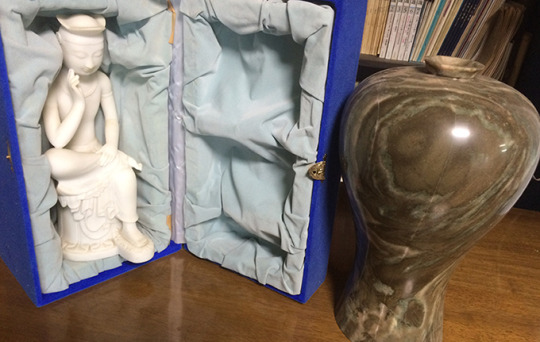
▲ Maitreya ‘future Buddha’ statue and marble vase – both made in UC factories in Korea – for sale at vastly inflated prices.
Asia Pacific Journal | Japan Focus
Peter McGill
October 15, 2022
Concealment and Deception
One of many charges made against the Unification Church is its lack of candour about numerous front groups, often given titles offering no clue as to their cult origins.
In Japan, recruitment and fund-raising have frequently involved concealment and deception. Sakurai says this has been necessary to hide both the Judaeo-Christian elements of the Moon cult in a country that lacks any monotheistic tradition, and its lacing with Korean nationalism. Recruiters “don’t disclose who they are but aim first at establishing a strong emotional relationship,” he notes. Elderly Japanese and housewives are particularly vulnerable to a strategy that employs fortune-telling and ancestor worship.
Moon’s boldest subterfuge in the late 1980s was to establish a Buddhist cult called Tenchi Seikyo (‘True teachings of heaven and earth’) to wring more money out of Japan. A ‘clandestine convergence’ of ‘traditional Japanese folk Buddhism’ with the Christian messianism of the Unification Church, Tenchi Seikyo met the expedient requirement for ‘a more direct fund-raising and witnessing approach within a predominantly Buddhist country,’ Thomas H. Pearce noted in a paper.2 The forerunner of Tenchi Seikyo was started in Hokkaido in the late 1950s by a charismatic spiritual medium, Kawase Kayo.

▲ Kawase Kayo with Sun Myung Moon
Her cult’s object of worship was the Maitreya ‘future Buddha’ (Miroku Bosatsu 弥勒菩薩). In the early 1970s, she secretly joined the Unification Church, but did not announce this to her followers, who continued to worship Miroku Bosatsu. This did not trouble Kawase, as according to Moon’s syncretic doctrine, the Korean messiah could also be Buddha:

▲ Moon as Maitreya Buddha
‘Naturally, the Lord of the Second Advent [i.e., Moon], who comes as the central figure of Christianity, will also play the role of Buddha, whom Buddhists believe will come again, as well as the role of the “True Man” whose appearance Confucianists anticipate, and “Chung Do Ryung” (“Herald of the Righteous Way”), whom many Koreans expect to come. In addition, he will also play the role of the central figure whom all other religions await.’ (‘Divine Principle,’ 1973)
Kawase founded Tenchi Seikyo after receiving a “heavenly message” in 1987. The messenger was a young African who had belonged to the Unification Church in Zimbabwe. Cultists believed him to be the incarnation of ‘Lord’ Heung Jin, the second son of Moon who died in a car accident in 1986. During a visit to Japan, the African Heung Jin instructed Kawase to obtain legal status for a new Miroku church.
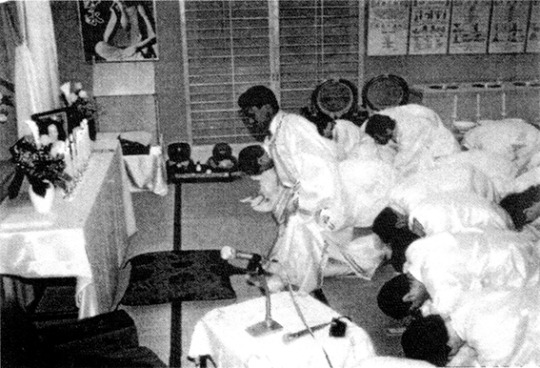
▲ Cleopas Kundiona at a Tenchi Seikyo dojo in Japan
‘Within months,’ the Unification Church ‘had organised Tenchi Seikyo centres throughout the country. Thousands of members and a large amount of money were invested in creating this new organization.’ In the 1990s, out of 111,000 followers of Tenchi Seikyo, only 8,000 had been informed that the Miroku Bosatsu they were worshipping was actually Moon Sun Myung. Members of the Unification Church were in charge of running the Tenchi Seikyo centres, known as dojo, and they all believed that Moon was Miroku Bosatsu,’ while their ‘core concern’ was that Moon needed ‘money and members to save the world.’ Pearce was told by an officer of Tenchi Seikyo that his cult had made ‘very large contributions to Moon.’

▲ Cleopas Kundiona at a Tenchi Seikyo dojo in Japan. Note the miniature pagodas and the marble vases.
In order to peddle Unification Church products, such as marble vases, miniature marble pagodas, ivory inkan seals, Buddhist prayer beads and ginseng tea, Japanese consumers first had to be won over.
Typical Moonie approaches to Japanese strangers have included “Please cooperate in this questionnaire into youth consciousness,” or “I am studying palm reading. There are stress lines in your hand that indicate a transition period.” Bit by bit, they drew out personal worries, and family and financial misfortunes.
Pearce interviewed a Unification Church female member who claimed to be a trainee monk and gained entry to Japanese homes by promising to read a householder’s fortune. The kanji characters of the victim’s name inevitably would indicate trouble in the spirit world, but this could be rectified by buying a new inkan seal. After the order was placed, the Unificationist would continue to visit the house and give instructions on worship at the family altars, so that the ancestral curse would be lifted. Once the inkan arrived, the target would be invited to a showroom for the sale of marble vases.

▲ Inkan name seal
Remedies from bad karma, “to free you from the fateful destiny of ancestors,” were all exorbitantly expensive. One bottle of concentrated ginseng extract was peddled for ¥80,000. A carved pagoda would set you back ¥5.4 million. Missionaries scanned death notices to identify the recently bereaved, who were then offered special communication channels to the spirit world in return for a sizeable donation.
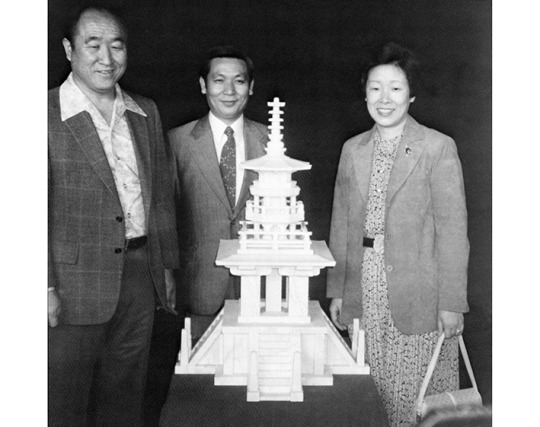
▲ Sun Myung Moon and Hak Jan Han with a miniature pagoda. They claimed they knew nothing about the pagoda scam in Japan.
The Unification Church has defended such fraudulent practices. “Imagine that one of our ancestors committed a sin in his life and is now in hell, but let’s say he can ascend to heaven from hell through our ancestor donations. He can be freed from hell. How great is this?” spokesman Ahn told the Al Jazeera news channel in 2012.
The Asian financial crisis of 1997-8 dealt a heavy blow to Unification Church finances. In 2005, Moon’s fourth son Kook Jin, who has an MBA from the United States, was put in charge of restructuring the Tongil (‘Unification’) Group, the church’s business empire in Korea.
In 2012, Moon Kook Jin told a Unification Church assembly in Seoul that the cult had “fought a very difficult battle against the Japanese government’s persecution of our church” and had “prevented the government from closing our church down.” Both membership and income in Japan had posted healthy growth, he assured cult members. Net membership in Japan increased by “15,000” in three years and debt incurred from settling legal claims had been cut by more than $300 million. “We are doing just fine,” he assured.
If confirmed, this increase in membership may be linked to targeting of Zainichi ethnic Korean permanent residents, who either immigrated to Japan before 1945 or are descended from them.
According to Sakurai of Hokkaido University, most members of the Unification Church in Japan “are ordinary Japanese.” However, in 2005 the Public Security Intelligence Agency reported that a “unique group” had established “a new organization with the purpose of gathering Koreans living in Japan and that exhibited attempts to extend its influence by incorporating these Zainichi Koreans and affiliated parties” and was “inciting a sense of danger and anxiety” to expand its power. The following year, the agency added that the group “advocates the unification of the Korean Peninsula and has made moves to create friction with Zainichi organizations by making Zainichi Koreans and affiliated parties attend gatherings in South Korea and through other means." In response to opposition questions in the Diet, the Cabinet clarified on August 15 that this “unique group” being monitored was the Unification Church. It was categorised as unique because of “doctrines and claims that deviate from social norms.”3
A huge Moon Church scam in Japan is revealed
#unification church#sun myung moon#hak ja han#ffwpu#UC of Japan#Peter McGill#Kawase Kayo#Tenchi Seikyo
0 notes
Text
Highlights + Updates!
Hello! It's been such a long time since I've posted because I am. Bad at social media :-). Either way, it is currently Rock the Clock, and there's some down time so I'll give you a highlight reel of what the rest of last term was like from episode 52-57.
Episode 52: Tokophobia - Tying back to the previous episode, we took the time to discuss the fear of pregnancy and giving birth.
Sources
Cleveland Clinic, 12 April 2022. Tokophobia (Fear of Childbirth)
Jomeen et al, 2020. Tokophobia and fear of birth: a workshop consensus statement on current issues and recommendations for future research
Kathy E. Greathouse, 2016. The "Nightmare" of Childbirth: The Prevalence and Predominant Predictor Variables for Tokophobia in American Women of Childbearing Age.
Kristina Hofberg and Ian Brockington, 2000. Tokophobia: an unreasoning dread of childbirth
Léa Poggi, 2018. When Fear of Childbirth is Pathological: The Fear Continuum
Manjeet Singh Bhatia, 2012. Tokophobia: A dread of pregnancy
Rebecca Webb et al, Sept 2021. Interventions to treat fear of childbirth in pregnancy: a systematic review and meta-analysis
Episode 53: The Unification Church - This episode connects back to the beginning of the school year, where we had previously discussed Shinzo Abe's death and his ties to the Unification Church. A brief unpacking of the political/religious organization.
Sources
Erin Snodgrass, 2022. Mass weddings and cult accusations: Who are the 'Moonies' and what is the Unification Church?
Alia Shoaib, 2021. A gun church that glorifies the AR-15 and is led by the son of the 'Moonies' church founder has been making alliances with far-right figures
Why I Joined, 2022. Dr. Thomas Ward: Leftist to Unificationist
Unification Thological Seminary, n.d.. Ward, Thomas J.
Yim Hyun-su, 2022. [KH Explains] What is Unification Church and why is it controversial?
John Gorenfeld, 2022. Bad Moon Rising
John Gorenfeld, 21 June 2004. Hail to the Moon king
Congressman Danny K. Davis, n.d..
Lisa Kohn, 20 August 2018. I grew up in a cult — and there is nothing more intoxicating than knowing you have the 'Truth'
Thisanka Siripala, 15 September 2022. Japan and the Controversial Unification Church
Episode 54: Midwestern Mormonism - Keeping to the topic of religion, I wanted to make sure we did an episode about Mormonism in between The Brobecks and IDKHOW episodes, lol. This episode is more specifically about how some Mormons are starting to move back to the midwest.
Sources
KBIA, 31 January 2012. Mormons returning to northwest Missouri, 174 years after 'extermination order'
Pew Research, n.d.. Mormons - Religion in America
Church of Jesus Christ Wikia, 2023. United States List of Stakes of the Church
History, 7 October 2021. Mormons
James T. Duke, n.d.. Eternal Marriage
Mormon Wiki, 28 April 2021. Eternal Progression
BBC, 8 October 2009. Baptism for the Dead
American Experience, n.d.. Polygamy and the Church: A History
Brooke Crum, 21 July 2013. Mormon church to end door-to-door missionary practice
Rachel McRady, 12 December 2022. 'Sister Wives' Guide: Everything to Know About Kody Brown's Wives, Children and Who Is Legally Married
Episode 55: Organ Donation - A more fundamental-style episode, Jeffrey and I talked about how Americans can sign up to have their organs donated as well as being sure to make your wishes known to your family, friends, or both. Communication is key! A few weeks after this episode came the fed's big investigation into UNOS, which is quite unfortunate timing on our end, but hopefully there can be more equity in our donation process moving forward.
Sources
UNOS, n.d.. The history of organ donation and transplantation
One Legacy, n.d.. Organ Donation Step by Step
ISOS, n.d.. Illinois Organ/Tissue Donor Registry
Iowa Donor Network
Maggie Koerth, 3 April 2019. Our Organ Donation System Is Unfair. The Solution Might Be Too.
A.P., 9 March 2022. A man who got the 1st pig heart transplant has died after 2 months
Hanae Armitage, 30 August 2022. Stanford Medicine researchers take early, critical step toward growing organs
Episode 56: The Long History of Fanfiction - This is Jeffrey's solo episode for the term! I hope tumblr can take to this one as well :-).
Sources - Waiting on Jeffrey, will amend this post ASAP!
Episode 57: IDKHOW and Reincarnation... - I know this one could probably use its own post, especially because it seems to be the most relevant to tumblr's interest, but it would be unfair to separate my solo work out again I think you know? This episode starts off where I ended The Brobecks episode from last term. It was recorded JUST BEFORE some of the recent drama, there was very little evidence at the time I had presented this. Oh how cruel time can be...
Sources
Ryan Seaman and Friends, May 2022. Anthony Purpura
Genius Lyrics, n.d.. I DONT KNOW HOW BUT THEY FOUND ME
TELLEXX, n.d.. Stress Evaluation
iDKHOW LORE, n.d..
Twitter, 21 October 2018. SRCH PRTY
The Brobecks, 2012. Quiet Title
Instagram, n.d.. iDK HOW BUT THEY FOUND ME
Instagram, n.d.. Dallon Weekes
Instagram, 18 February 2023. 2nd album recording announcement
P.S. Here's a thing I intended to have for the IDKHOW solo post before winter quarter killed my soul...

#deathropology#radio depaul#chicagos college connection#posting this during rtc#just had a 2 hr show! playing ib!#trying to not fall asleep orzzz#anyways. i dont think im gonna tag all of this stuff because i dont want to clog things#episode 52#episode 53#episode 54#episode 55#episode 56#episode 57#revisit
0 notes